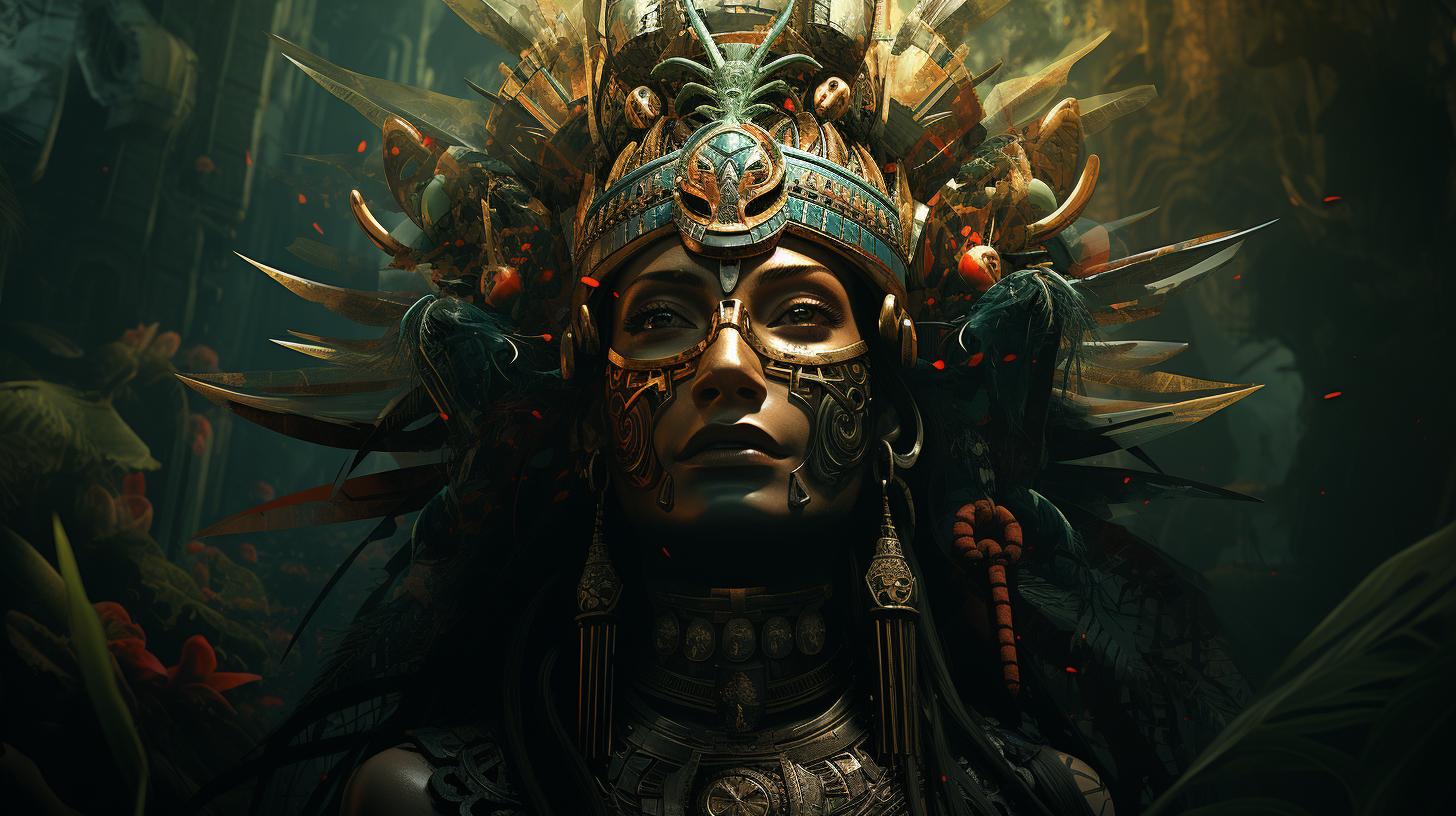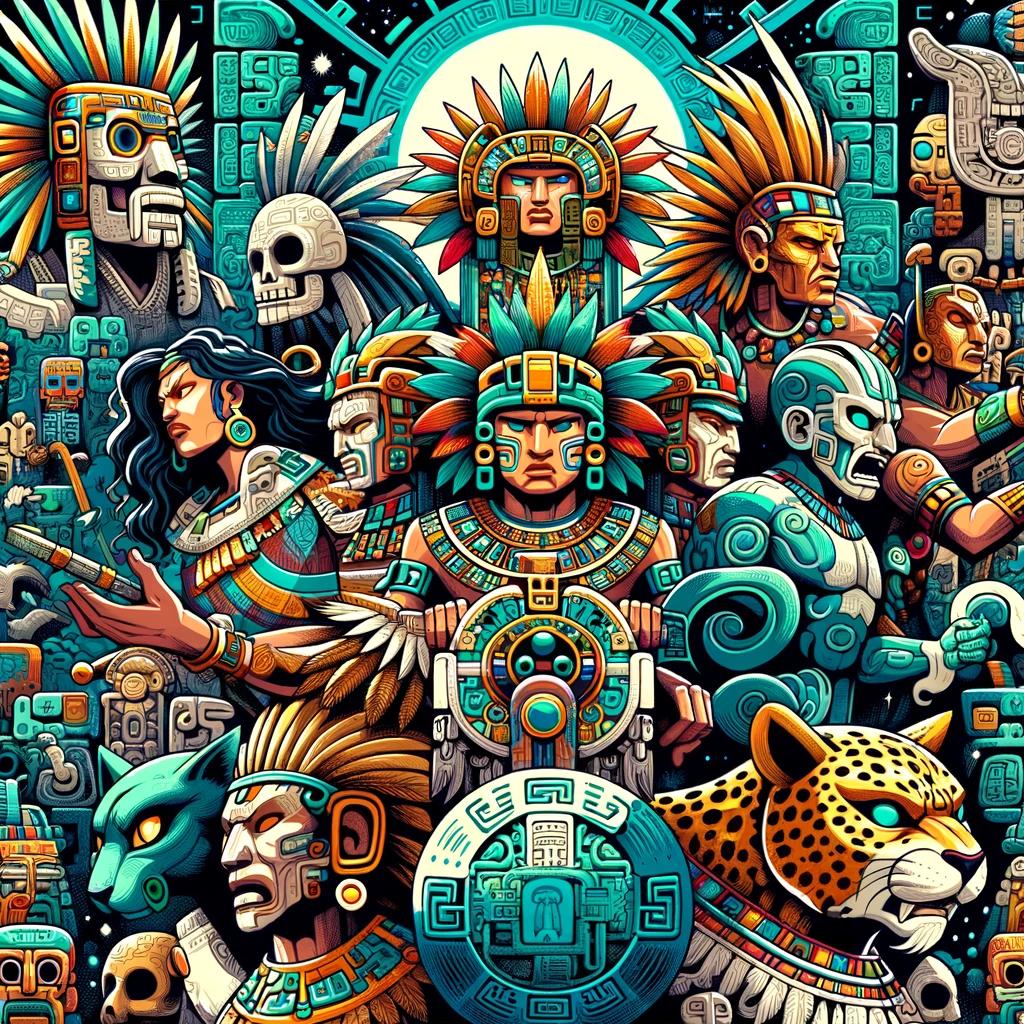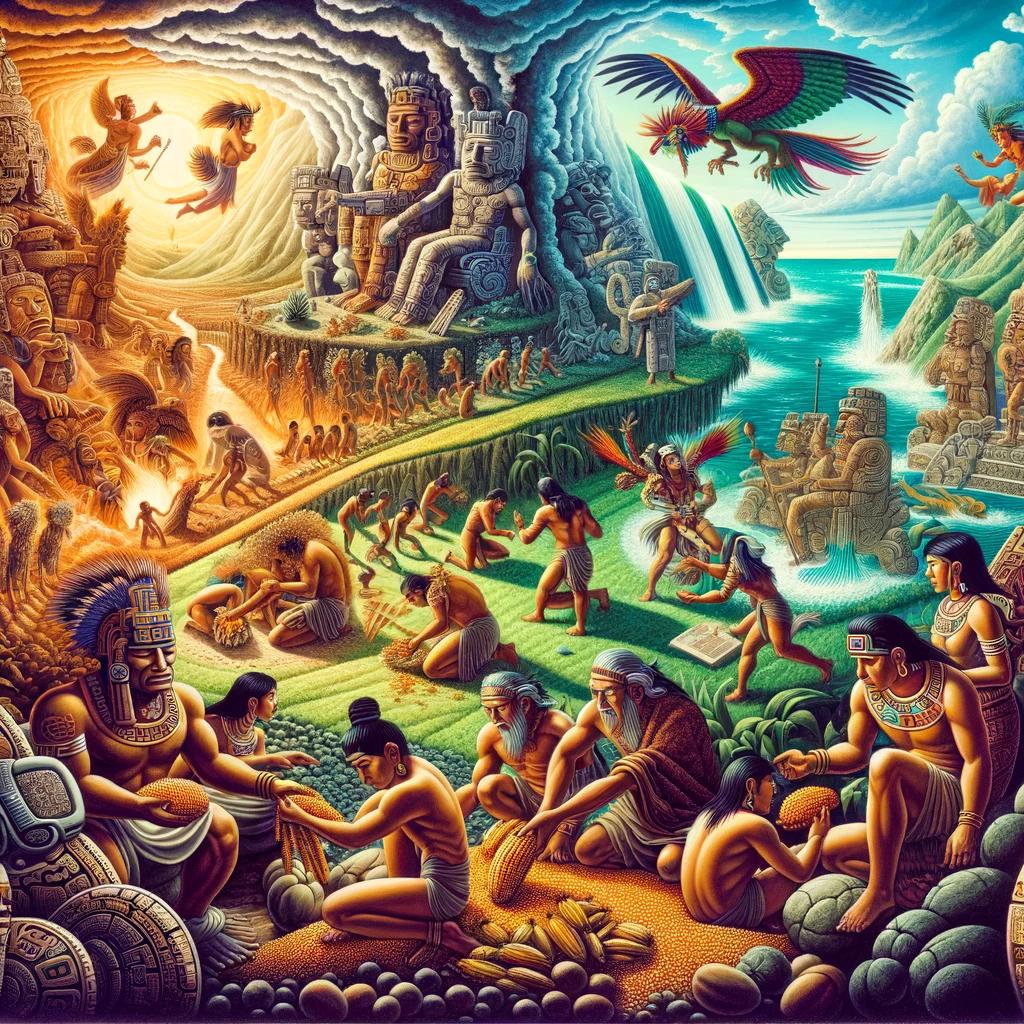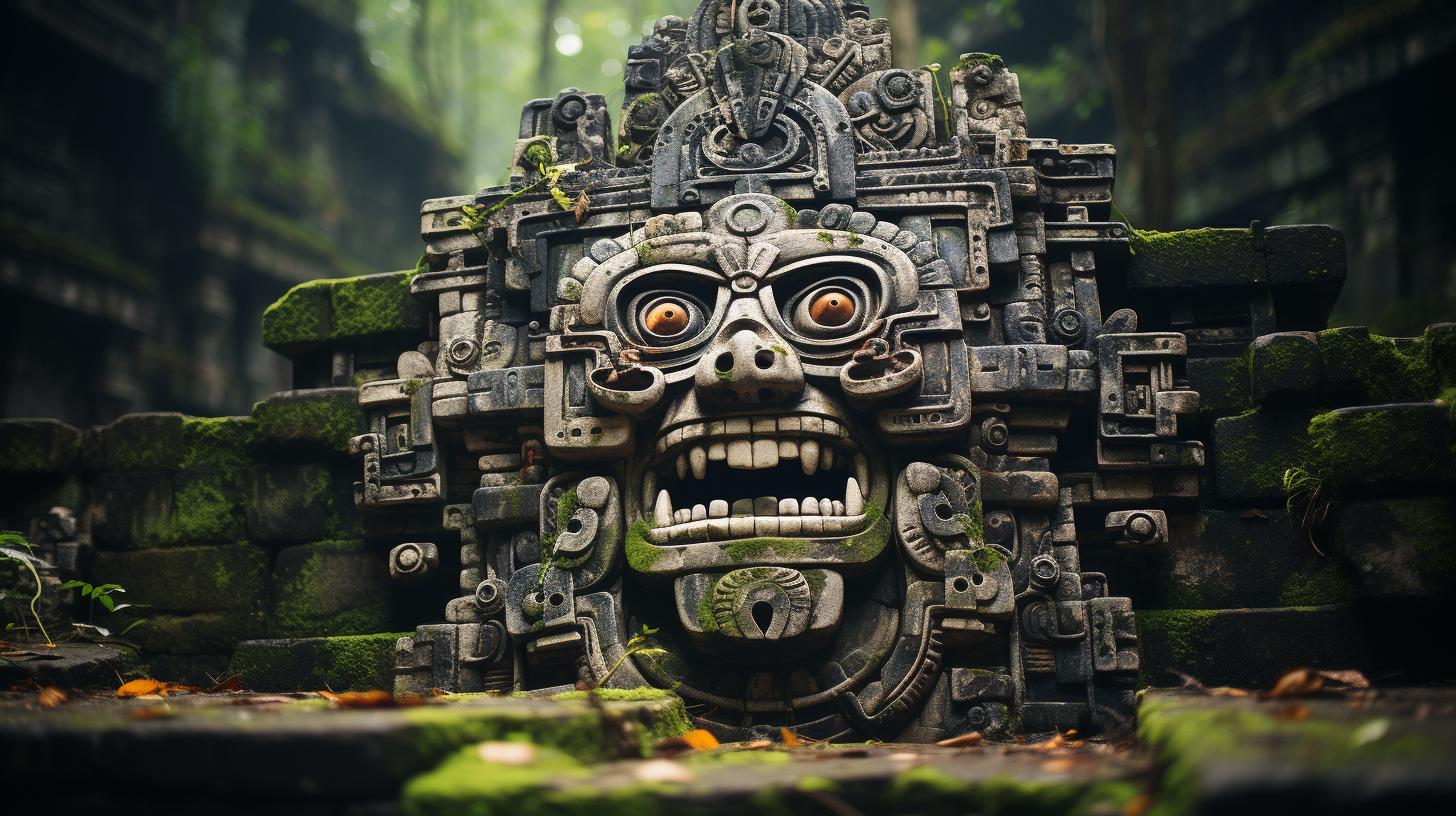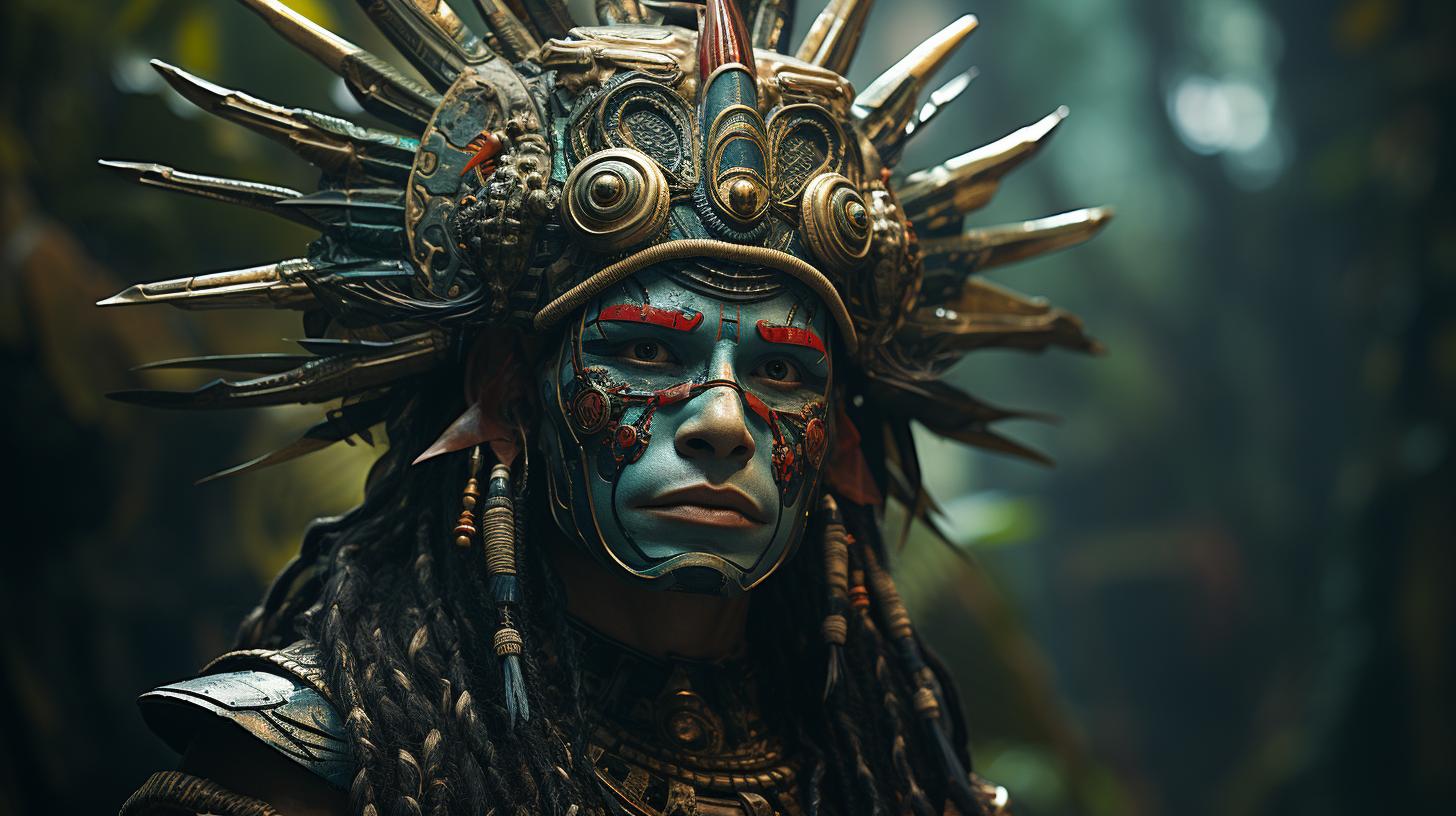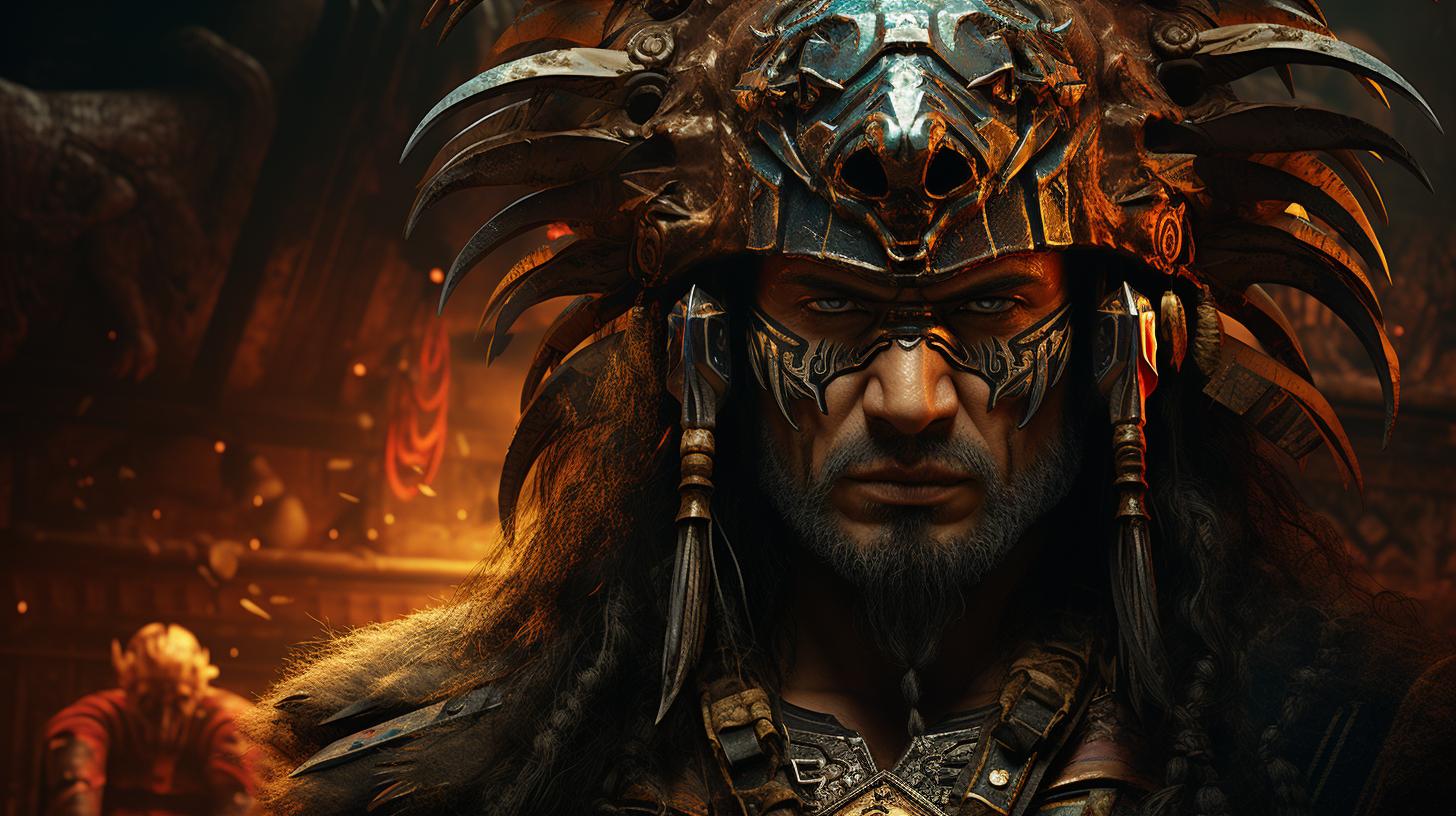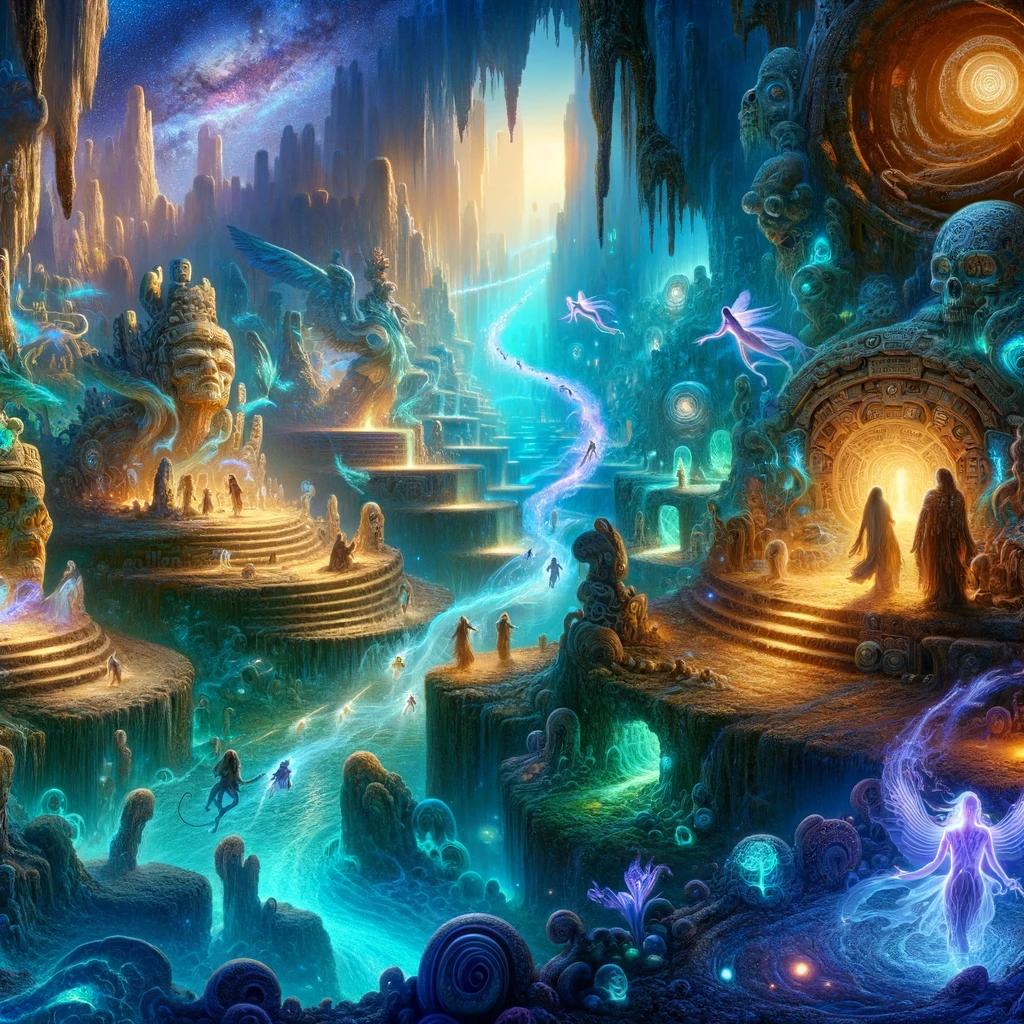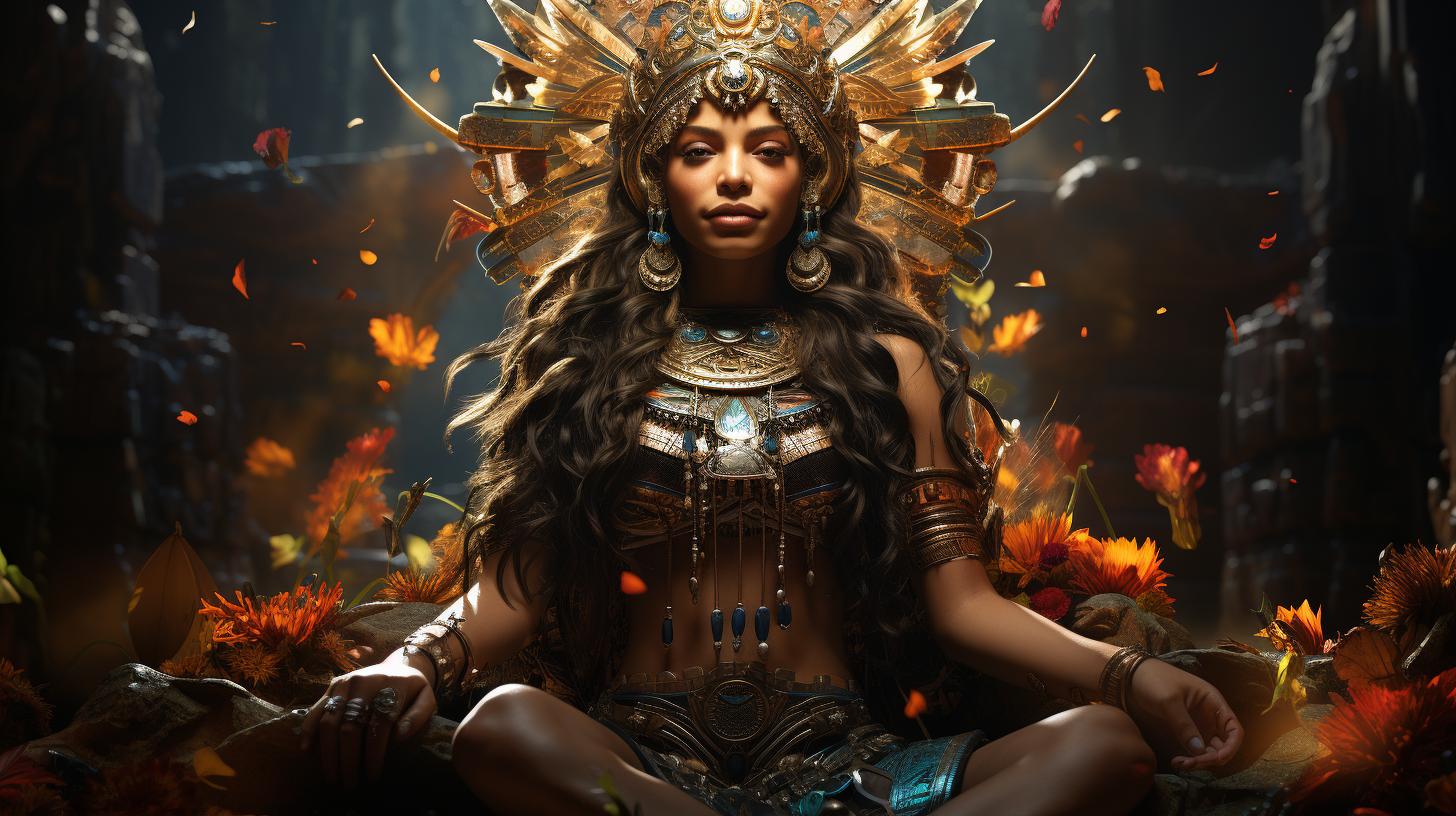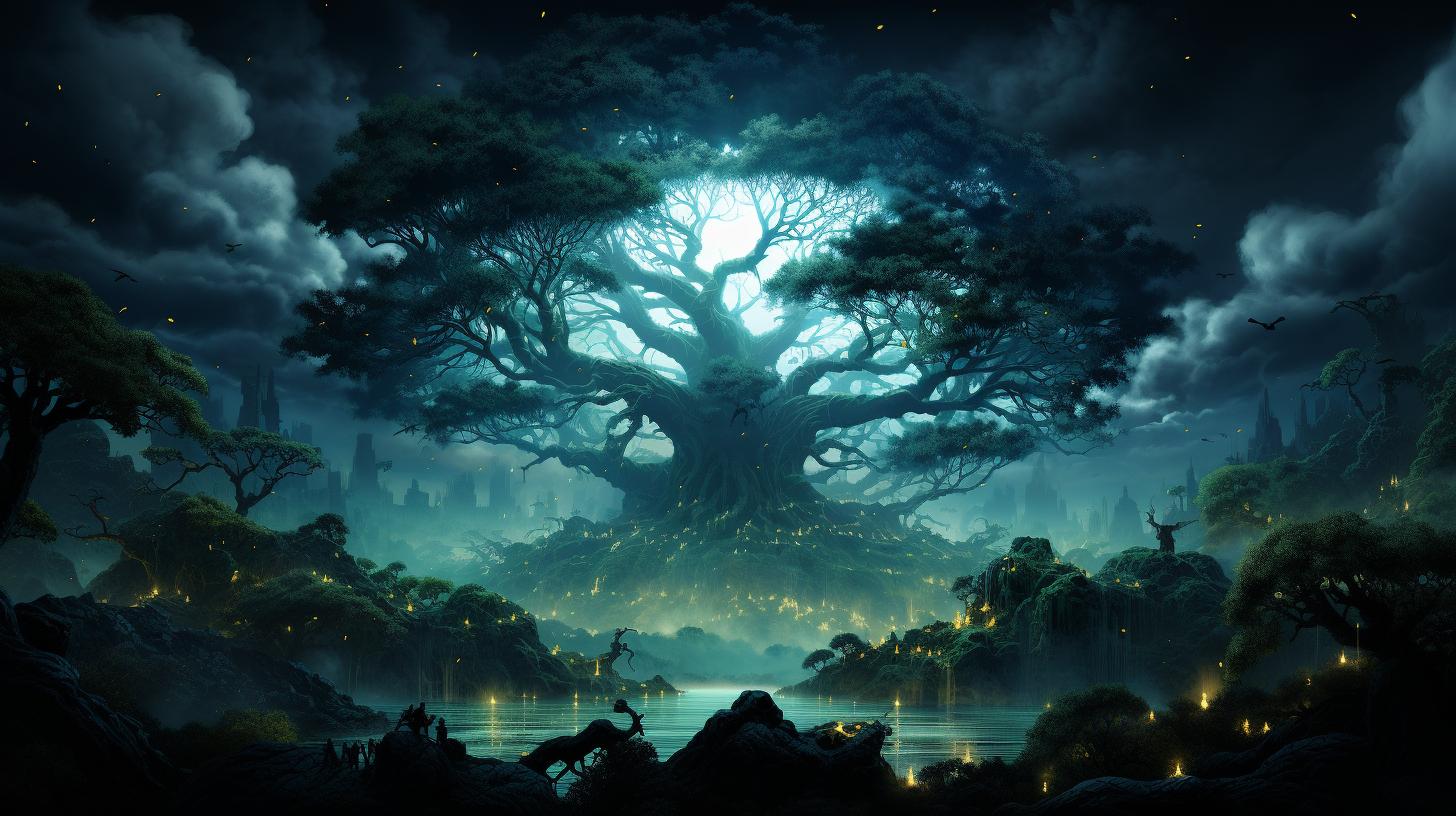Unveiling the Myth of Ixtabai: A Seductive and Dangerous Maya Legend
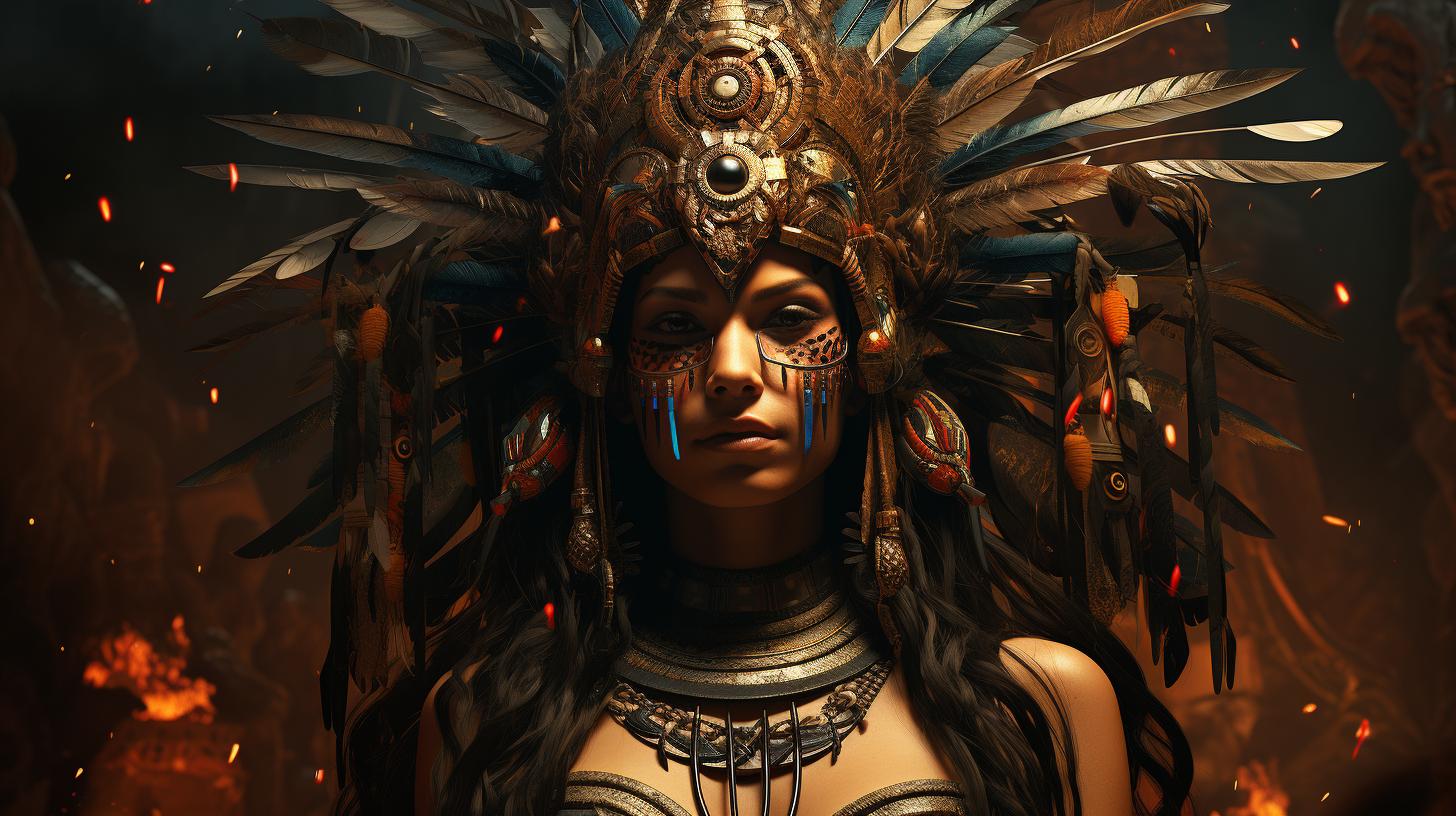
Ixtabai, the mythical figure of Maya culture, captivates with her seductive and dangerous allure. Explore the etymology and origins of Ixtabai, including the ancient Maya goddess Ixtab, the psychopomp for those who chose suicide.
Unfold the legend of Xtabay, featuring the contrasting stories of Xkeban, a benevolent yet promiscuous woman, and Utz-colel, a vain and cruel figure. Discover the modern portrayal of Xtabay as a beautiful temptress lurking behind the sacred ceiba tree.
This article also delves into the moral lessons, symbolism, and the personal journey of the author in therapeutic art and crisis response.
Understanding the Mythology of Ixtabai
The mythology surrounding Ixtabai holds a significant place in Maya culture, offering intriguing insights into ancient beliefs. This section delves into two crucial aspects: the ancient Maya goddess Ixtab and her role as a psychopomp for suicides.
Let’s explore each of these elements in detail.
The Ancient Maya Goddess Ixtab
In Maya mythology, Ixtab was revered as a powerful goddess with a peculiar dominion over suicide. Her name, derived from the term “Xtab,” has ancient roots linked with the act of hanging.
As the ancient Maya goddess associated with suicide, Ixtab held a unique position in their spiritual pantheon.
Ixtab as a Psychopomp for Suicides
Believed to guide the souls of those who took their own lives, Ixtab served as a psychopomp—a spiritual entity responsible for escorting the deceased to the afterlife. Ancient Mayans held the belief that Ixtab acted as a compassionate guide, leading these troubled souls to their final resting place or paradise.
Unraveling the Legend of Xtabay
Unraveling the legend of Xtabay takes us into the captivating stories of two distinct women: Xkeban, the promiscuous yet benevolent woman, and Utz-colel, the vain and cruel woman. These contrasting figures shed light on the complexities of human nature and the consequences of one’s actions.
Xkeban: The Promiscuous Yet Benevolent Woman
Xkeban, despite her promiscuous behavior, possessed a kind and caring heart. She dedicated herself to helping those in need, offering her support and compassion. Despite being poorly treated by society due to her perceived immorality, Xkeban’s actions showcased her true character, untainted by societal judgments.
Utz-colel: The Vain and Cruel Woman
Utz-colel stands in stark contrast to Xkeban, embodying vanity and cruelty. Her actions were driven by a sense of self-importance and a lack of empathy for others. Utz-colel’s character serves as a cautionary tale, highlighting the destructive consequences of arrogance and cruelty.
The Mysterious Deaths of Xkeban and Utz-colel
The mysterious deaths of both Xkeban and Utz-colel add further intrigue to the legend of Xtabay. After Xkeban’s passing, her body was discovered surrounded by fragrant flowers, and she was buried in a grave where the xtabentún flower grew.
In contrast, Utz-colel’s fate transformed her into a cactus emitting a foul odor, reflecting the consequences of her actions.
These captivating accounts shed light on the dichotomy of human nature and the importance of character and virtue.
By unraveling the legend of Xtabay, we gain a deeper understanding of the intricacies of human behavior and the moral lessons embedded within these ancient stories.
Exploring the Modern Portrayal of Xtabay
The modern portrayal of Xtabay depicts her as a seductive and dangerous woman, enveloped in an aura of mystery and allure.
She is often represented as a captivating figure, luring men into her embrace, only to reveal her true nature as a venomous serpent or another deadly form. This portrayal highlights the treacherous and alluring aspects of Xtabay’s character, captivating the imagination of those who encounter her legend.
Xtabay as a Seductive and Dangerous Woman
Xtabay, in the modern context, symbolizes the seductive power that can lead individuals astray. With her enchanting beauty and irresistible charm, she entices unsuspecting men, drawing them towards her. However, once they have fallen under her spell, she reveals her dangerous nature, often leading to their demise.
This portrayal serves as a cautionary tale, warning against the allure of temptation and the consequences that can follow.
The Sacred Ceiba Tree and its Connection to Xtabay
The sacred ceiba tree holds a significant connection to Xtabay in her modern portrayal. She is often depicted as waiting behind this majestic tree, using its presence to enhance her mysterious allure.
The ceiba tree, deeply rooted in Mayan mythology, represents a connection to the spiritual realm and acts as a gateway for Xtabay to attract and ensnare her victims. Its towering presence adds to the mystical ambiance surrounding Xtabay, emphasizing her supernatural origins and power.
Symbolism of Black Hair in the Legend
In the legend of Xtabay, her black hair carries symbolic significance. Black hair is often associated with mystery, allure, and femininity. It represents Xtabay’s captivating and seductive nature, further enhancing her dangerous appeal.
This symbolism highlights the transformative power of beauty, capable of both enchanting and ensnaring those who encounter it. Xtabay’s black hair serves as a visual motif, emphasizing the allure and treachery she embodies.
Morality in the Ixtabai Legend
Contrasting Virtue and Cruelty: Xkeban vs. Utz-colel
The Ixtabai legend presents a stark contrast between Xkeban and Utz-colel, two prominent female figures. Xkeban, despite being criticized for her promiscuity, displayed compassion towards those in need. In contrast, Utz-colel showcased vanity and cruelty throughout her existence.
Their differing behaviors and actions highlight the importance of virtue and kindness, regardless of societal judgments.
The Moral Lesson of Compassion and Kindness
The tale of Ixtabai imparts a profound moral lesson centered around compassion and kindness. It emphasizes that external purity and virtuous appearances hold little value if not coupled with a genuine and compassionate heart.
Xkeban’s actions, driven by a benevolent nature, outweigh the negative stigma surrounding her promiscuous behavior. The story encourages us to prioritize empathy and understanding, recognizing the importance of inner goodness over superficial judgments.
Symbolism in the Ixtabai Legend
In the rich tapestry of the Ixtabai legend, symbolism plays a significant role in conveying deeper meanings and exploring profound themes. This section delves into the symbolism present in the legend, shedding light on the intricate connections between death, love, the heart, the ceiba tree, and the enigmatic black hair of Xtabay.
Death, Love, and the Heart
At the core of the Ixtabai legend lies a profound exploration of the delicate balance between life and death, love and loss. Symbolically, death represents not only the physical end but also a transformative journey to a different realm.
Love, on the other hand, serves as a powerful driving force that transcends mortality, leaving an eternal imprint on the human heart.
The heart, in the Ixtabai legend, symbolizes the very essence of human emotions and desires.
It represents both vulnerability and strength, as it navigates the complex realm of love, loss, and the enigmatic pull of Ixtabai’s seduction. The intertwined symbolism of death, love, and the heart adds layers of depth and complexity to the profound narrative of Ixtabai.
The Significance of the Ceiba Tree
The sacred ceiba tree holds immense significance in the Ixtabai legend, symbolizing the interconnectedness of the human and divine realms. Standing tall with its widespread branches reaching towards the heavens, the ceiba tree serves as a portal between the mortal world and the ethereal realm of Ixtabai.
According to the legend, Xtabay lurks behind the ceiba tree, drawing unsuspecting men into her mesmerizing grasp. The ceiba tree symbolizes the threshold between temptation and destiny, marking the boundary where mortal desires are tested against higher spiritual truths.
Furthermore, the ceiba tree represents the resilience and vitality of the natural world that serves as a backdrop for the eternal struggle between temptation and virtue, darkness and light. Its roots firmly planted in the earth symbolize the grounding force that connects humanity to the cycles of life and death.
The symbolism of the ceiba tree in the Ixtabai legend adds an enchanting element to the narrative, reminding us of the delicate balance between the earthly and the celestial.
Symbolism in the Ixtabai Legend’
In the rich tapestry of the Ixtabai legend, symbolism plays a significant role in conveying deeper meanings and exploring profound themes. This section delves into the symbolism present in the legend, shedding light on the intricate connections between death, love, the heart, the ceiba tree, and the enigmatic black hair of Xtabay.
Death, Love, and the Heart
At the core of the Ixtabai legend lies a profound exploration of the delicate balance between life and death, love and loss. Symbolically, death represents not only the physical end but also a transformative journey to a different realm.
Love, on the other hand, serves as a powerful driving force that transcends mortality, leaving an eternal imprint on the human heart.
The heart, in the Ixtabai legend, symbolizes the very essence of human emotions and desires.
It represents both vulnerability and strength, as it navigates the complex realm of love, loss, and the enigmatic pull of Ixtabai’s seduction. The intertwined symbolism of death, love, and the heart adds layers of depth and complexity to the profound narrative of Ixtabai.
The Significance of the Ceiba Tree
The sacred ceiba tree holds immense significance in the Ixtabai legend, symbolizing the interconnectedness of the human and divine realms. Standing tall with its widespread branches reaching towards the heavens, the ceiba tree serves as a portal between the mortal world and the ethereal realm of Ixtabai.
According to the legend, Xtabay lurks behind the ceiba tree, drawing unsuspecting men into her mesmerizing grasp. The ceiba tree symbolizes the threshold between temptation and destiny, marking the boundary where mortal desires are tested against higher spiritual truths.
Furthermore, the ceiba tree represents the resilience and vitality of the natural world that serves as a backdrop for the eternal struggle between temptation and virtue, darkness and light. Its roots firmly planted in the earth symbolize the grounding force that connects humanity to the cycles of life and death.
The symbolism of the ceiba tree in the Ixtabai legend adds an enchanting element to the narrative, reminding us of the delicate balance between the earthly and the celestial.
X’tabai in Maya Oral and Mythological Traditions
X’tabai holds a significant position in Maya oral traditions and mythological beliefs, embodying the mysterious and captivating essence of the natural world.
Exploring the depth of this goddess of nature reveals profound connections to Mayan cultural beliefs, offering insights into their ancient reverence for the environment and its enigmatic forces.
Deep Dive into the X’tabai Goddess of Nature
The exploration of X’tabai, the goddess of nature, unveils a world where the intertwining of life and the divine manifest in astounding ways.
X’tabai, often depicted as a seductive and alluring entity, entangles mortals with her enchanting powers. As we delve into her essence, we discover the intricate network of symbolism and spiritual significance that underscores X’tabai’s role in Maya mythology.
X’tabai embodies the inherent balance and interconnectedness of nature, reflecting the harmony within the universe. Her presence in the mythological realm resonates with the varied aspects of life’s cyclical nature – birth, growth, death, and rebirth.
The goddess symbolizes the eternal cycle of creation and decay, evoking both awe and fear among the Maya people.
Moreover, X’tabai’s association with natural landscapes and sacred places underscores her embodiment of the environment’s sanctity.
It is within the sacred forests, mountains, and streams where her essence converges with the tangible physical realm, manifesting in rituals, ceremonies, and communal gatherings. The reverence for X’tabai in Maya oral traditions highlights the significance of nature in their belief system.
Connections Between X’tabai and Mayan Cultural Beliefs
Understanding the connections between X’tabai and Mayan cultural beliefs provides profound insights into the worldview and value system of the Maya civilization. The reverence for nature expressed through the worship and representation of X’tabai reveals a deep-rooted respect for the natural world and its intangible forces.
The Maya people recognized the delicate balance between humans and nature, acknowledging their inherent interconnectedness. They celebrated the harmonious coexistence with the environment, symbolized by X’tabai’s portrayal as the goddess of nature.
Through rituals, offerings, and prayers, they sought to maintain this equilibrium, ensuring the prosperity and well-being of their communities.
Furthermore, X’tabai’s presence in Mayan cultural beliefs illustrates their understanding of the duality of existence.
She represents both the beauty and ferocity of nature, reminding the Maya of the unpredictability and transformative power inherent in the natural world. By embracing this duality, the Maya embraced the impermanent nature of existence, embracing change as an essential part of their spiritual journey.
In conclusion, X’tabai holds a pivotal role in Maya oral traditions and mythological beliefs, embodying the essence of the natural world and its profound connection to Mayan cultural beliefs. As we delve into the depths of X’tabai, we unveil a universe where nature and spirituality intertwine, revealing the Maya’s profound reverence for the environment and its enigmatic forces.

